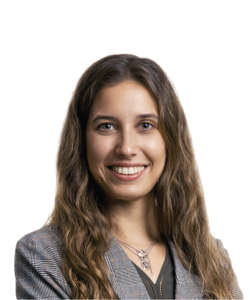Transport models are a tool for analysing mobility patterns in a given area using mathematical expressions.
It aims to capture the mobility relationships between different areas within the study area and to simulate the behaviour of road users on the road network, so that the traffic generated adequately represents the real traffic observed on the roads.
The modelling scheme follows the steps of the classical 4-stage model:

The steps required to build a private transport model that aims to estimate the changes that will occur as a result of transport interventions are described in general terms below. To do this, it is necessary to have a calibrated base year model that represents the real situation.
The first step is the data collection that will generate the necessary information to be used during each next step.
The private transport mobility simulation requires the development of transport network , which describes the road system in the study area and consists of nodes, arcs, zones, centroids and connectors.
The size and number of zones in the model is a critical factor in determining the accuracy of a model and the time it takes to run. To obtain the trip matrix that will feed the model, it is necessary to first carry out the zoning system that defines the trips origin and destination within the transport system. The transport zones are defined as territorial areas that have aggregated characteristics of the territories and that, depending on the needs of the project, can be more detailed or more aggregated (macro-zones) within the boundaries of the model

The centroids of each zone are geographically located at the centre of gravity of the population distribution, or the main population centre, and are linked to the network by connectors that allow the trips generation/attraction to and from each of the zones. Connectors identify the places where demand from an area appears on the network.
The nodes, start and end of the links, represent the roads crossings or intersections and the variation of road characteristics (e.g. number of lanes, speed…) The links represent the different sections of the roads and have different attributes that define among other characteristics, the number of lanes, the capacity and the speed.

Once the transport supply is defined, the origin-destination trip matrix is input according to the defined zoning and assigned to the network.
There are different assignment methods in which each trip will choose the best route through the network based on a combination of time and cost. There are simpler assignment methods, such as the “All or Nothing” assignment, which considers that there is no congestion in the network, so costs would be fixed, and more complex ones that take into account capacity constraints, such as the “User Equilibrium” assignment. Thus, in each iteration, a traffic flow is assigned to each section of the network, which will involve capacity constraint effects on that section and a new travel time, which provide a starting point for the next iteration.
The results of this first assignment do not necessarily represent the real situation, which justifies the importance of carrying out the calibration and validation step of the model.
The two most used statistical parameters for model calibration are Pearson’s correlation coefficient (R2) and the GEH statistic.
- Pearson’s correlation coefficient (R coefficient2 ), which is the measure of the linear correlation between the calibrated and assigned volumes in the model.

- GEH statistic. This is an empirical formula used to compare the assigned volume with the traffic count. A GEH of less than 5.0 defines an adequate match between observed and simulated vehicles and a model is considered validated when 85% of the volumes compared have a GEH of less than 5.0. The formula, where M is the simulated flow and C is the gauged traffic, is as follows:

In terms of building a transport model for future years, it is necessary to consider changes that influence user behaviour such as changes in travel demand, changes in the transport network and transport services, and changes in land use.
Ana Álvarez Cruz
Transport Modeller at Vectio
Sources:
Toll road traffic and revenue forecasts, Robert Bain , 2009
Better traffic and revenue forecasting, Luis Willumsen 2014
The use of transport models in transport planning and project, Jaspers (Joint assistance in supporting projects in European Regions), 2014.
PTV VISUM Manual

